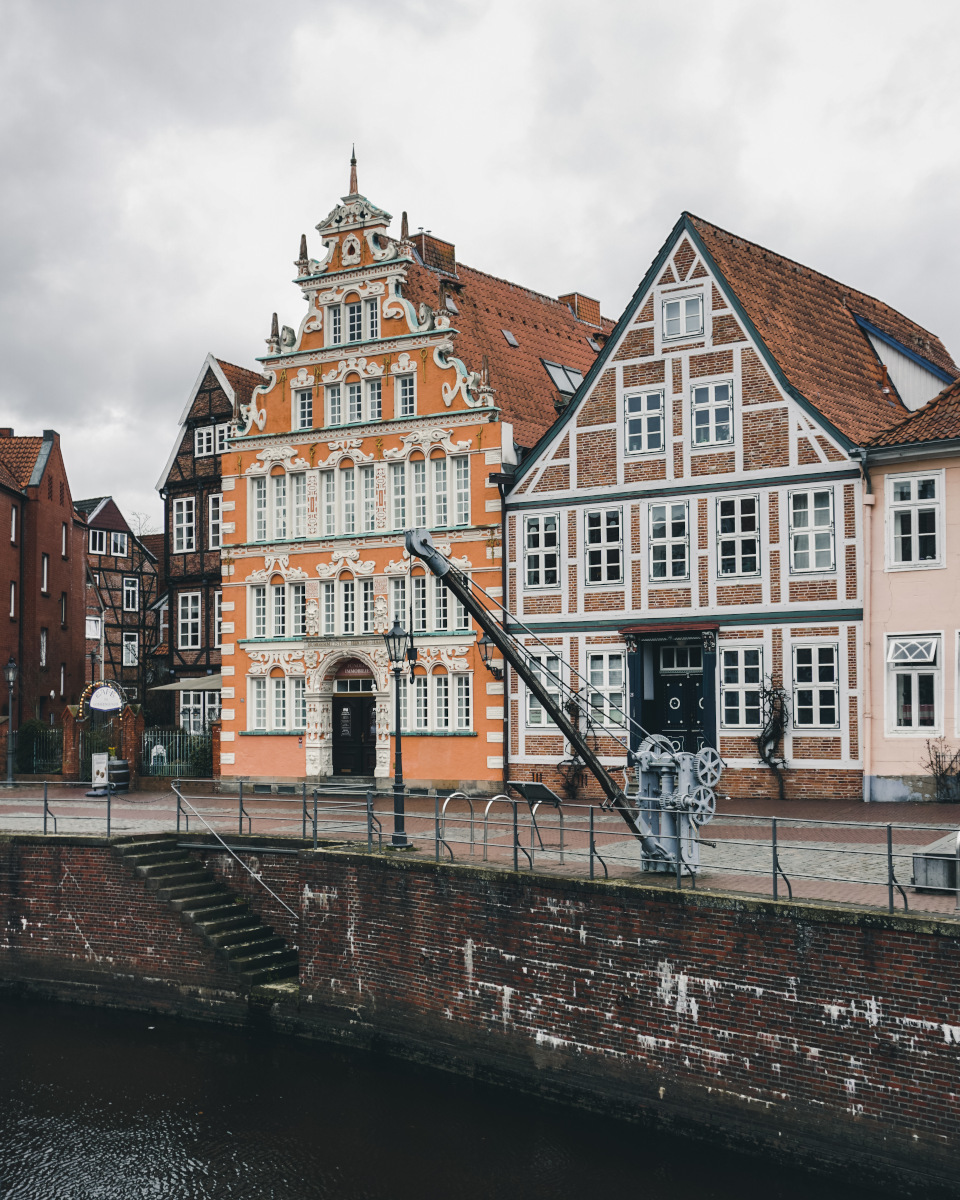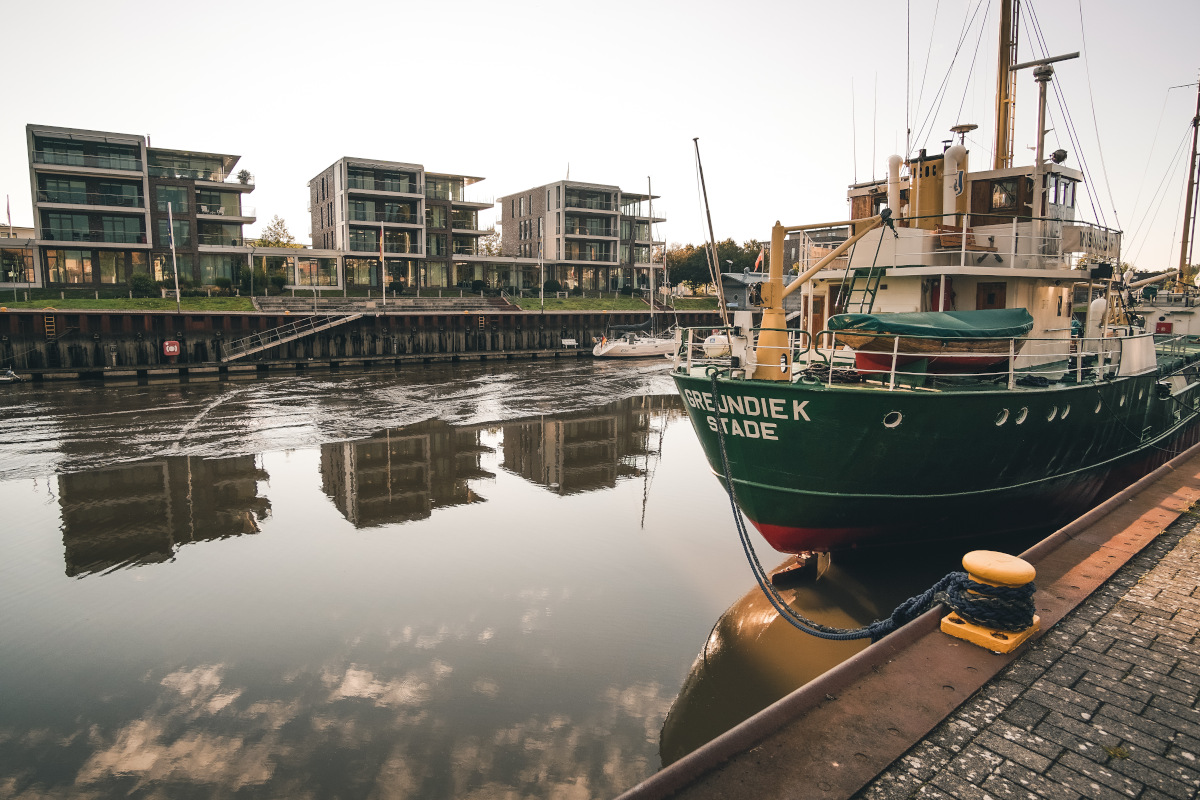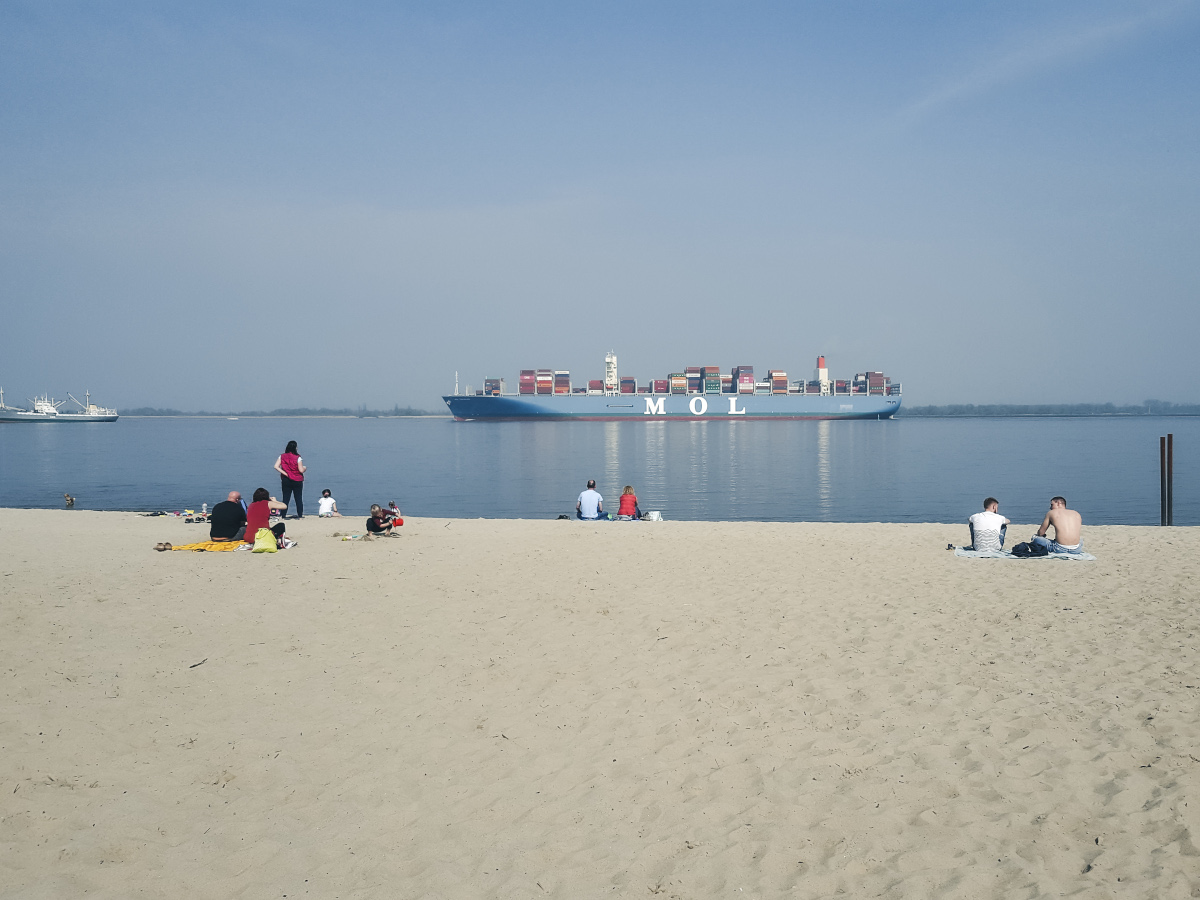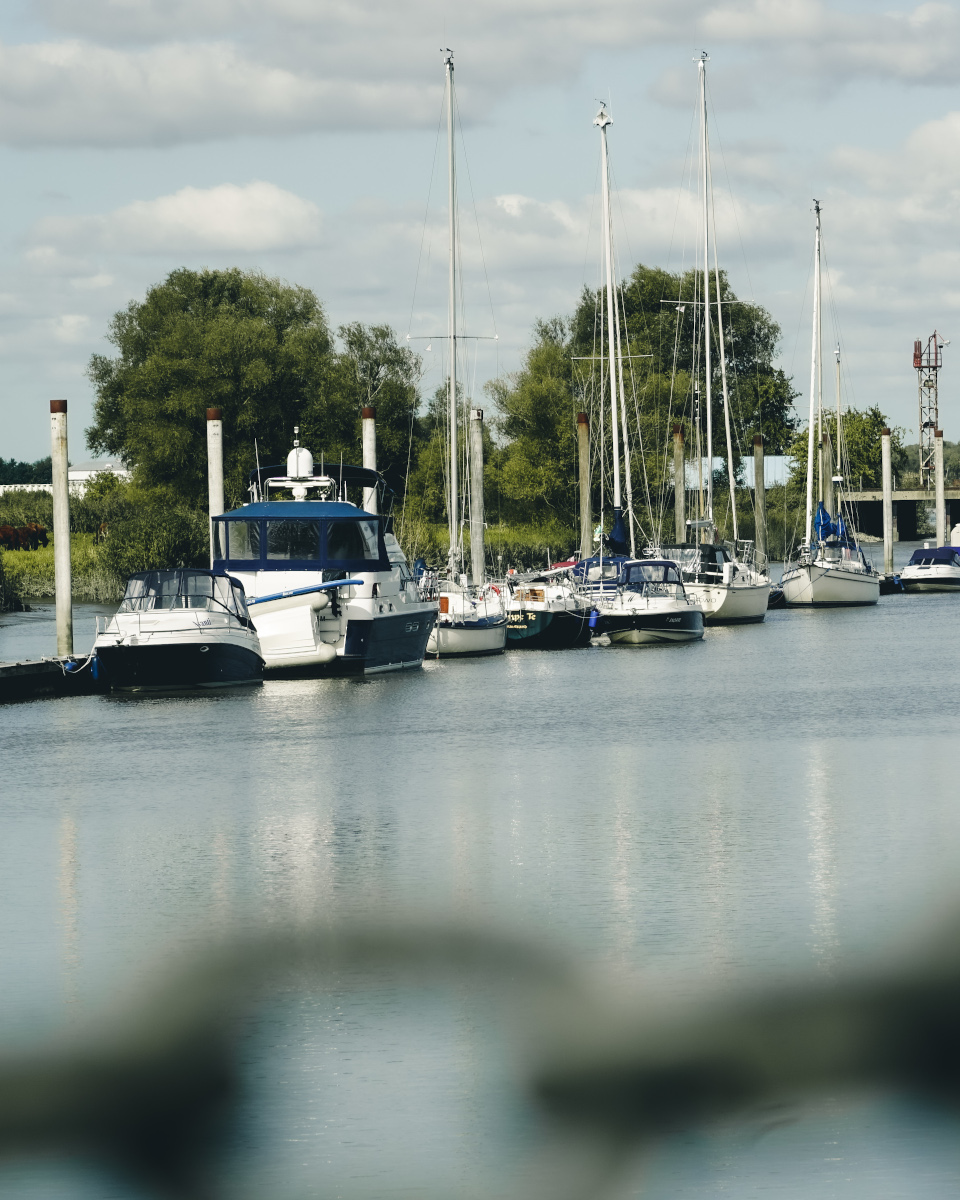Stade is a small town in Lower Saxony and is located on the Elbe in the catchment area of Hamburg. Due to its earlier membership of the Hanseatic League, Stade has the title of a German Hanseatic city. In the Middle Ages, the city was an important trading point on the Elbe. Today the historic port is the landmark of the city. It is located in the middle of the old town on the Schwinge that flows through the city and then into the Elbe. The architecture along the harbor is reminiscent of the influence of the Swedes who controlled Stade in the 17th century. But other landmarks of the city are also shaped by this time. These structures make Stade a popular travel destination in the Hamburg region. But how do I get to Stade of all places? Well, I lived in this town once. That’s why I would like to show you a few impressions from my time in Stade in this blog post. Because, although it mainly attracts older people, the Hanseatic city definitely has something to offer for the younger generation as well. In addition to the buildings mentioned, there is a beach and the largest apple-growing area in Germany. Water sports on the Schwinge are also popular. I’m glad you found my travel blog and hope you enjoy reading my travelogue about this German town.
Overview of the sights in Stade
The best known is the old harbor in Stade. Beautiful buildings are lined up here side by side and conjure up a wonderful backdrop in the middle of the old town. The city center is generally characterized by ancient half-timbered houses and historical buildings. You will also find the Schwedenspeicher at the harbor, which used to be a provision store and is now a museum. To the east of it is the city harbor, where you can relax and unwind. Via the Salztor you can reach a boat rental located at the castle moat. Here you can rent a canoe or SUP board and explore the idyllic Schwinge. The moat leads you to Museum Island, on which there are buildings from the time of the Swedish rule. Outside of Stade, the Barger Heide awaits you, a secret spot where you can enjoy the beauty of nature in the midst of heathland. A sandy beach, lighthouses and impressive cargo ships await you on the Elbe. In this area you can also visit the countless apple orchards of the German Altes Land. You see, there are a lot of attractions and travel destinations in the Hanseatic city of Stade.
How to get to Stade in Germany
Getting to Stade by car
Stade can be easily reached by car via Bundesstraße 73 or German Autobahn 26. You can find parking spaces at the city harbor or in four different parking garages in the old town. I have also marked these on the map.
Getting to Stade by train
But traveling by train is also attractive. From Hamburg there is an hourly regional train to Stade, which continues to commute to Cuxhaven. S-Bahn trains also run into the city. The trips are inexpensive because Stade is part of the Hamburg transport network. You can find timetables and tickets on the HVV or Deutsche Bahn website.
There is also a Flixbus stop in Stade, which commutes between Hamburg and Cuxhaven. I myself have often used the Flixbus service* and have always been satisfied.
If you want to learn more about traveling by car or public transportation in Germany, check out my travel blog about Germany and Lower Saxony.
Hotels and accommodation in Stade
The Hanseatic city offers a variety of hotels, holiday homes and guest houses. Most of the hotels are located in the city center, directly in the old town and guarantee short distances and a great atmosphere. Outside of Stade, especially on the Elbe Cycle Path, there are countless guest houses and family-run accommodations that guarantee a wonderful view of the Elbe. In Stade you are sure to find accommodation that meets your needs.
The historic port and the German old town of Stade
The old Hanseatic port is a historic inland port on the Schwinge. It was built in the 11th century and was an important trading point in northern Germany at that time. The port also served as a strategic point of transition across the Elbe to connect important long-distance trade routes. Moreover, Scandinavian pilgrims used Stade due to its location as an important stopover on their journey to the great pilgrimage destinations in the south. Today, however, the historic port is separated from the navigable water by a weir and is no longer of economic importance as it used to be. But culturally even more because tourists appreciate the history and the picturesque backdrop of this sight. Magnificent buildings from the 15th and 17th centuries adorn the streets along the harbor. For example, the Bürgermeister-Hintze-Haus with its Renaissance facade or the Goeben House. In the south of the habor there is a reconstructed wooden crane that was used to load and unload ships in the Middle Ages. However, no ships have dock here for a long time. Gastronomic establishments are lined up along the quay walls, where you can enjoy the picturesque atmosphere of the harbor, especially in summer. Countless bars, cafes and restaurants offer something for every taste.
The Schwedenspeicher at the habor of Stade
At the end of the harbor is the baroque Schwedenspeicher, which was built by the Swedes in the 17th century. After the end of the Thirty Years War, Stade and other cities went into Swedish hands as war compensation. The Swedes wanted to turn Stade into a fortress and therefore needed huge amounts of food for the troops. That is why they built this huge supply store. Today the warehouse contains a museum with exhibitions on the Hanseatic League and the history of Stade. An absolute highlight in Stade. You can find more information on the museum’s website.
A walk through the old town of Stade
The historic buildings are not only located at the old Hanseatic harbor, but also run through the entire old town of Stade. For example, ancient half-timbered houses are lined up on Bungenstrasse and Bäckerstrasse and are worth seeing. At the Pferdemarkt is the magnificent Zeughaus, which was used by the Swedes as an arsenal. It was later used as a market hall, theater, and cinema. Today there is an Irish pub in the building. There are also two churches in the old town: the Cosmae Church and St. Wilhadi. Tourists can tour the churches and marvel at the gigantic organs inside. It is also possible to climb the steeple of the Cosmae Church, from which you have a fabulous view over the area. Two thirds of all buildings were destroyed in a major fire in the 17th century. Including the old town hall, which was rebuilt in 1667 on the preserved vault. If you want to find out more about the history of Stade, you can take part in a city tour. You can find all the offers on the tourist information website.
Stade’s city harbor and a trip on the Schwinge
Not far from the old port is the next sight of Stade: the city port. There is a parking lot and a listed crane on the site. However, this is no longer in operation, but only functions as a prop. Together with the museum ship Greundiek, it creates an authentic maritime atmosphere. A food truck also offers Fischbrötchen (fish in bread) and other specialties that you can enjoy while relaxing on the quay walls. Here you have a great view of the adjacent ships and you can follow the song of the seagulls. On the other side of the harbor there are more seating options. However, the Schwinge is tidal water, so that the water level drops enormously at low tide.
Canoe adventure on the Schwinge
The port is connected to the moat of Stade via a weir. The Holzhafen, where the so-called Fleetkähne leave, awaits you here. These boats will carry you along the moat while the captain tells you about the history of the ports and shipping. You can find information about this attraction on the tourist information website. If you are looking for a little more adventure, you should visit the neighboring beach club. Here you can rent a canoe or a SUP board and explore the Schwinge on your own. You can find prices and information about the boat rental on the SUP club’s website. I’ve marked the jetty on the map.
Short Facts for your Trip
I recommend visiting Stade between late April and early May. The countless apple orchards in the Altes Land region are in bloom at this time. However, the Hanseatic city is also very worth seeing at all other times of the year. In summer, the Barger Heide and the beach on the Elbe are particularly attractive. Stade lies in the cool temperate zone. You can find a climate table on the following page.
The Hanseatic city of Stade can be visited within a day. But if you want to see the apple orchards, the beach, or other sights in the area, I recommend planning more than a day. There is a lot to discover in this region of Germany.
Since I lived in Stade myself, I was never dependent on accommodation. But there are several hotels and many holiday apartments in the city. On the following website you will find a good selection of accommodations*
The best way to explore Stade is on foot. All sights within the city are within walking distance. To visit the surroundings, I recommend a bike that you can also rent in Stade. But buses also go to some destinations. You can find timetables on the website of the transport association or Deutsche Bahn.
The right equipment depends on when you come to Stade and what you want to see. However, you should think of a rain jacket at any time of the year.
For the narrow streets and historic buildings, I recommend packing a wide-angle lens. Outside of Stade, extensive, flat landscapes are waiting for you. A telephoto lens is ideal here. On the beach, for example, you can take wonderful pictures of the huge container ships.
Culture in Germany – The open-air museum on the island
On the southwestern edge of the old town lies an island that is completely enclosed by the Schwinge. It is mostly just called the island and contains a publicly accessible open-air museum. The island was created when the Swedes expanded the fortification of Stade. At that time, a wall shield was built here, which was supposed to protect the walls between two bulwarks. At the beginning of the 20th century, it was decided to build a museum on the unused space. Since then, you can visit an Altländer farmhouse, a Geest farmhouse and a post mill on the island. All the buildings in the area were bought in northern Germany, dismantled, and put back up in Stade. Today they blend harmoniously into the cityscape and offer visitors a special atmosphere. While the island is always freely accessible, visiting the farmhouses is only possible between May and September. There is also an island market here twice a year. I have marked the idyllic attraction of Stade on the map, which you can reach via two wooden bridges. You can find more information on the museum’s website. I took my pictures in spring.
The Barger Heath – the pure nature experience outside Stade
To the southwest of Stade, the Schwinge meanders through a flat, spacious landscape. This so-called Schwingetal borders on a 40-hectare nature reserve near Groß Thun, which is known as Barger Heath. The last ice age left stones and sand in the region, which were blown up by the wind to form dunes. The result was a hilly landscape with diverse flora. In addition to the heather plants, there are more than 100 other flowering plants here. However, the edge areas are characterized by conifers. Nowadays, the Barger Heide serves the residents as a local recreation area and is a secret spot. Sandy paths lead you along a picturesque heathland. Heidschnucken graze on the meadows and thus preserve the heather. Especially at sunrise or sunset, the full beauty of nature is revealed here. A perfect travel destination for a walk in the fresh air. Since the heather only fully blooms in summer, I recommend visiting in August. The best way to get to Barger Heide is by bike or car. A bus will only take you to the Fredenbecker Weg stop, from which it is a 15-minute walk. The locations are marked on the map. My pictures were taken at sunrise in early September. For me the most beautiful nature experience in Stade.
White sand on Stade beach
The Elbe flows past Stade about 5 kilometers outside the old town and is already well over 1000 meters wide here. A beautiful beach is hidden behind a high dike that protects the region from flooding. The easiest way to get to the travel destination is by car. A parking space is available at the beach. Getting there by bus is difficult, as it rarely drives. I have marked the stop on the map. You can find the bus schedule for line 2051 on the website of the transport association. An easier option is to come by bike. A picturesque bike path runs from Stade along the Schwinge to the car park. A staircase leads you over the dike, before you reach the beach via a small path.
The sand is white, and the view is wide. In the distance is the decommissioned nuclear power plant. Water sports enthusiasts romp on the water, ships cross the Elbe. With a bit of luck, you can marvel at huge container ships that travel to Hamburg or distant countries. You can find a ship radar on this website. I often went for a walk on the beach or the dike or watched the goings-on on the Elbe. Because mostly it is quiet and empty in this area. In summer, however, the beach is well attended, although swimming is not recommended due to the strong current. In addition, there are no sanitary facilities or shops here. You can find this a good kilometer further at Twielefleth. There is also a beautiful lighthouse. If you love sand and water, you shouldn’t miss the Elbe beach near Bassenfleth.
If you are looking for more destinations and places to see in Lower Saxony or Germany, check out these books. These travel guides will show you the beauty of Germany and give you valuable information for your trip to this region of Germany.
More attractions from Stade and this region of Germany
There are many other great sights and travel destinations to discover in the vicinity of Stade. For example, the half-timbered houses and orchards in the Altes Land, the many beaches, harbors and lighthouses on the Elbe or the extensive marshland and moorland in this area. In the following I will show you a few more pictures from the region. You will then have to explore the rest for yourself during your own trip in Germany. Have lots of fun with it and thanks for reading my travelogue.
If you’re looking for more destinations and places to see around Stade, check out this book. The readable travel guide shows you the beauty of the Alte Land and Hamburg, and gives valuable information for your trips to this region of Germany.
I hope you enjoyed my travelogue about the German town Stade. On my Lower Saxony Blog I show you other beautiful travel destinations in Lower Saxony and share valuable tips and experiences for your trip to Germany. Did you like my blog post? Was I able to help you? Then I would be happy if you recommend my travel blog, leave a comment, or follow me on Instagram. Thanks for reading and have fun on your vacation in Germany.
The references marked with an asterisk (*) are so-called commission links. If you click on such a referral link and buy something, I get a small commission from the provider. For you, the price does not change! I see it as a small thank you for my work and look forward to any support


































